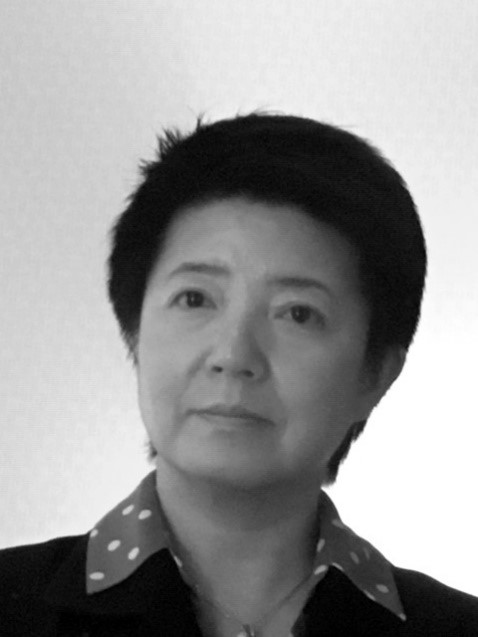Meet EPA Scientist Cissy Ma, Ph.D., P.E.

Tell us about your background.
I am an environmental engineer by training. I received a B.E. in environmental engineering from Tongji University, Shanghai, China, an M.S. in environmental science and policy from University of Wisconsin-Green Bay and a Ph.D. in civil engineering focusing on environmental engineering from the University of Minnesota. My Ph.D. work investigated the role of hollow-fiber membranes for hydrogen delivery to stimulate reductive dechlorination in simulated subsurface soil columns.
I then worked as a post-doctoral research associate at the University of Wisconsin at Madison studying the fate and transport of infectious prion proteins in the environment. Afterwards I joined EPA as a federal post-doctoral researcher. My work there focused on experiments studying the key processes that govern nanomaterial deposition and transport in the environment, the development of process models, and the integration of process modeling with transport modeling. I permanently joined EPA in August 2010. My primary research efforts are focused on applying new sustainability metrics to environmental management for sustainability. Currently, I am involved in developing system-based tools to holistically assess water systems and help transform our water systems towards a more sustainable future.
When did you first know you wanted to be a scientist?
My interest in science comes from the influence of my parents. Both are chemistry professors—one is organic and the other is inorganic chemistry. Their influences, plus the general university matrix in which I grew up, encouraged me to have curious mind and seek the power of knowledge. I did not seem to have that a-ha moment. I have always wanted to be a scientist. Marie Curie was my role model during junior high school years.
How does your science matter?
Now I am a system scientist who studies the system behaviors and finds solutions at system-level. It is important to understand and demonstrate why a system is more than the sum of its parts (Aristotle’s saying) and how to design a system that is most efficient. Like the ancient wisdom revealed, holistic solutions often solve multiple challenges simultaneously in a more cost-effective way, avoid burden shift and are intrinsically more sustainable in the long run. In practical sense, I explore the transformative changes in water systems by incorporating concepts of energy recovery, water reuse, nutrient recovery, decentralization, fit-for-purpose, etc. and applying integrated assessment metrics to measure the multi-dimensional performances. We are designing the sustainable water systems for the City of Tomorrow.
What do you like most about your research?
From nano-scale particle interfacial interactions to macro-scale system interactions, there is no boring day for me in science. There is always something new to learn. Environmental systems are complex. If I want to understand complex systems, the best scale is not just getting measurements at the microscopic level. Instead, it is critical and fundamental to me to go upscale to understand the common principles of energy, materials, and information that can be applied to all systems. My research brings me new perspectives of the world. In practical sense, I hope my research provides positive impacts in a significant way.
If you could have dinner with any scientist, past or present, who would it be? What would you ask?
Michio Kaku, who is still alive and is a professor of theoretical physics in the City College of New York. He is the co-founder of string field theory (a major branch of string theory). He is also futurist and popularizer of science. If I could have dinner with him, I would ask him if he thinks thoughts, dreams, consciousness, and souls are made of little vibrating strings. Could these tiny strings stop vibrating? Is it possible that the vibrating strings interact with the dark energy and dark matter in any way?

Dr. Cissy Ma with EPA colleagues visiting the wastewater treatment plant in the village of Bath, New York.
If you could have one superpower, what would it be and why?

Explore the 11-dimensional hyperspace described by String Theory and be able to come back to the present time and space. Maybe I will find the secret of life.
Any advice for students considering a career in science?
I used to be a guest speaker to my children’s middle school at the Career Day. This was what I told them: Learn as much as you can because the future career will require well-rounded people with multidisciplinary knowledge to solve complex issues. Don’t get limited by the boundary of any discipline. Consider pursuing an environmental field because we need all the bright minds to solve the most pressing problems. It might just be more rewarding and significant than discovering a new element.
What do you think is our biggest scientific challenge in the next 20/50/100 years?
Climate Change and fusion energy. I believe climate change surpasses every other scientific challenge in our time. If we do not have a planet or ecosystem that we can survive or sustain, other technologies or inventions won’t matter. Fusion energy, on the other hand, may provide the ultimate solution. The abundant energy without harmful waste will drastically reduce fossil fuel use and ultimately address climate change.
Whose work in your scientific field are you most impressed by?
Howard Thomas Odum (often referred as H.T. Odum). He pioneered the work on general system theory derived from his early years of studying ecosystem ecology. As one of his most significant contributions, he developed the concept of emergy, as energy memory or embodied energy. The emergy accounting is based on the observation of the energy flow patterns in ecosystems and economic systems during self-organization. It provides a unique common unit of non-monetary measure (equivalent solar energy joule, sej). I am very impressed with Odum’s theory and the massive hierarchical structure which provides a unique tool in integrated measures and a holistic view in sustainability science.
Editor's Note: The opinions expressed herein are those of the researcher alone. EPA does not endorse the opinions or positions expressed.
